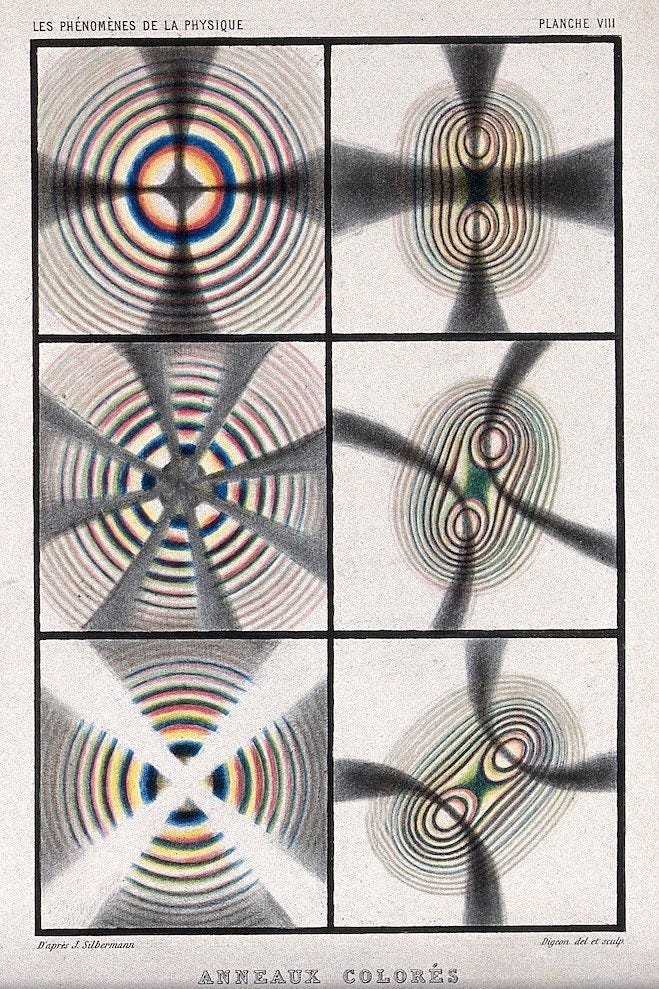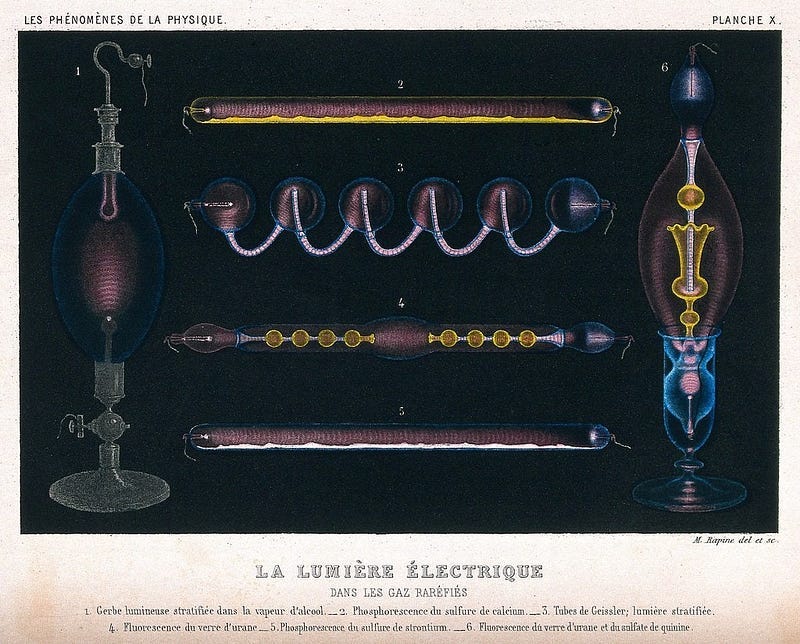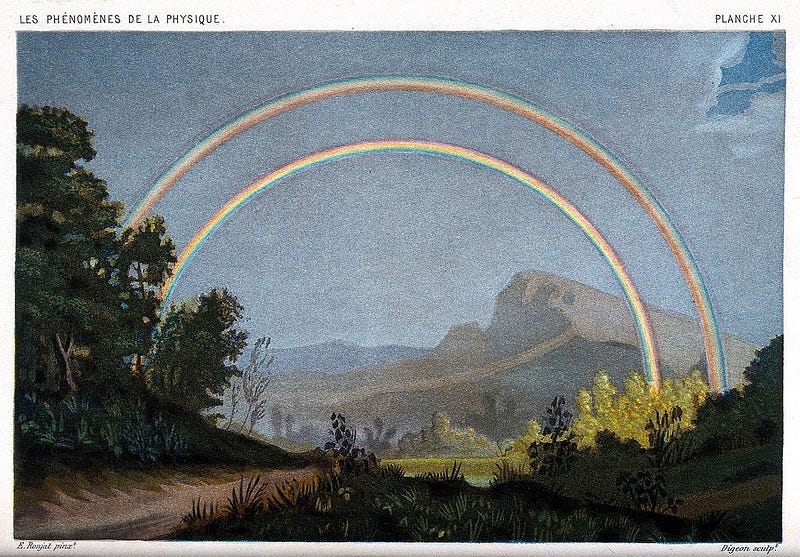On emotions and attention
In this note I want to share insights on the relationship of attention and emotions. Everyone has an intuitive grasp of what emotions are…
In this note I want to share insights on the relationship of attention and emotions. Everyone has an intuitive grasp of what emotions are, although categorisations may vary cross-culturally. The word emotion comes from the French émouvoir — to excite, stir up, agitate. There is a diverse spectrum to the emotional energy–butterflies in the stomach when excited, the cold, sinking pull of fear, the tremor of rage. Emotions always come up in meditation, but are often neglected and even perceived as distractions or obstacles to concentration. We might picture being concentrated as an emotionally numb state. Here we will explore a different view, where emotions are an integral part of attending and relating to the world. In this view, concentration is an emotionally charged, passionate engagement with the phenomena. It makes meditations joyful and exciting. We will start with the view itself and then talk about practical implications for meditators, giving some tips and tricks. I will also present distillation — one of my favourite and very useful practices, which habituates the meditator to strong emotional experiences, building up equanimity.
The topic of emotions is very broad, so let’s cut it down to a manageable size. We will narrow the scope to the phenomenology of emotions in meditation — the direct felt experience of what we name as an emotion. Meditation practice is like a phenomenological laboratory, with a stable environment and good measurement devices, where we can investigate our mind. As the meditator is directing their attention towards an object, how do emotions affect the focus and vice versa? When and how do emotions arise and how are they experienced?
The view
Emotions arise as we relate to the phenomenal world. The emotional energy is usually felt in the body as vibrations (pleasant waves of joy or painful sting of loss). This energy excites the mind and the body, making them engage with the experience. Attention guides the emotional energy, gives it direction and pattern — be it tunnel vision of anger or monkey-mind of anxiety. The pattern of attention and the spectrum of emotional energy together give rise to a distinct emotional experience, for which we have names like joy or sadness. Attention is like a crystal in the way of light (emotional energy). The play of light will depend both on the spectre (colour) of the light and the form of the crystal. The way we pay attention makes a huge difference to our emotional experience; likewise, the emotional energy strongly influences the way we pay attention. Emotion and attention do not exist without each other. In this view, attention is not passive observation, but something active. It is a projection of active emotional energy into the world. Of course, the world responds in kind by actively projecting itself back — when you direct your attention to phenomena, they grow and intensify, as attention zooms into them.
Implications
What does this view imply for a meditator? It makes attention based practice an emotional process. To focus, say, on our breath, we have to generate and direct emotional energy towards the sensations around the nose. It means that having a concentrated mind is a particular emotional state and to get concentrated we have to get into that state. What we are looking for is relaxed excitement. Relaxation is important for stability and clarity and excitement for vividness — we want the crystal of attention to become a smooth, clear lens and you want a lot of light from emotional energy to see clearly. Finding relaxed excitement is easier said than done, so let me share what I found useful in my practice.
To relax you have to “soften up” your emotional body or as it is often called the subtle body. The subtle body is the sensory space where emotional energy arises. It is usually felt inside of one’s torso. Relaxing it requires, first of all, fully feeling it and not looking away. Much like with the physical body, when you relax it you start feeling everything you have been holding out by tension. For example, the angry energy from an argument with a colleague can come back once you start focusing and relaxing. This happens because you had repressed some of it during the argument to hold back. When this repressed emotional energy comes up we tend to look and contract away from experiencing it. A common refuge is to go to thought — memory, self-talk, images. This, of course, moves attention. Moreover, the content of thought keeps the energy circulating, but never truly releasing the tension. Another trap is mistaking the conceptual content of thought for the cause of the emotional experience that has to be resolved by more thought. This is a dead end — the emotional energy will not go away however much you try replaying that argument with a colleague and coming up with smooth parries and sick burns. It is also important not to dull oneself and tolerate the feeling by numbing out and dissociating with the experience. This will kill vividness and clarity, ultimately putting you in a semi-sedated state (or simply to sleep). You need this energy to concentrate, don’t dull it!
A better technique is to let the experience of emotional energy pass over and through you. To resolve itself it has to be fully felt through. Give it as much space as it needs. This requires a degree of courage, but my recommendation is to go all in. If you are using breath as the meditation object, you can shift to finding breath in the energetic sensation of emotion (e.g. anger from an argument). If you manage to open yourself to the emotional experience completely, the energy will peak and then mellow down to a pleasant medium level, allowing you to relax. Relaxation makes attention open up and stabilise.
Distillation
Distillation is the practice that distils emotional energy by burning through it. The term distillation is borrowed from Shinzen Young’s talk [1], where he describes a very similar Taoist practice. The goal of it is to habituate oneself to the intensity of emotions. Being able to face their full intensity brings equanimity. Reading TMI [2] and other texts on meditation I first imagined equanimity to be a state of flat emotionality. Almost an anaesthetic, where nothing moves and you could watch your record collection burn with a blank stare and a half smile. I later realised that equanimity is the ability to experience the emotional energy fully while attention remains open and relaxed–not looking away from any aspect of experience and not contracting the attention. I noticed how with equanimity you can maintain focus on the meditation object or anything else you are doing even in the presence of an overwhelming emotional energy. Since you are not suppressing the energy, emotional experiences become a lot more acute, but also dissipate a lot faster. Attending this way converts all the arising energy into engagement with the world and creates no tension, no trace to resolve later, no conditioning, further improving equanimity. Distillation is most useful with difficult emotions like fear, anger, disgust and so on, but should be done with pleasant ones as well. Now here’s the practice itself.
Let’s use the fear of public speaking as a running example. You start with a high level of concentration by following your standard practice, e.g. following the breath. Once you reach the right concentration, invoke the emotion you want to distil, for example you can remember the last time you presented and how you felt anxious before or during. Now shift your attention to the feeling of this fear. How exactly it sits in your body, what temperature it has, how it moves, pulsates or changes shape. You want to make the feeling as intense and as large as possible — like the explosion of sourness when you bite into a fresh lemon. You do this by giving it space to grow and define itself, by surrendering to it and letting it take over. The intensity will peak in a cathartic experience, which often involves crying, laughing or maybe both at once. It is followed by a strong sense of released tension and relaxation. This is exactly the relaxed excitement you need for concentration — high energy, low tension.
Overdriving the intensity might be tricky. If there is a particular memory or statement that brings that feeling about, bring it forward every time you seem to be losing the intensity. It is useful to describe the feeling with a simple statement about yourself, like “I am wrong” or even “I am bad”. You can use it as a mantra — repeat it as you are focusing on the feeling. Precision or vividness also matters — you want to feel it as precisely as possible, without looking away from any aspect of it. So refining that statement can be helpful. Our most complex emotions usually boil down to a few universal negative beliefs such as “I’m not good enough” or “I’m a bad person”. So you might start with describing your fear — “I’m scared of presenting”and can refine it to a core negative belief such as “I’m wrong”. Try different statements out and stay with those that make the feeling intensify, it should be a very visceral response. Some old memories of having felt this feeling before might come up. Let them come, don’t look away, but keep going towards the feeling of emotional energy stored in them.
It is important to note that digging up memories or formulating what you are feeling precisely in language is not the goal of the practice, but simply the means of keeping the focus on the feeling and increasing its intensity. Tracing your fear of presenting back to a memory of being laughed at in primary school might feel like a big insight, but this knowledge is not very useful on its own. If distillation is successful you won’t be coming back to this memory, instead the fear of presenting will turn into excitement and will energise you.
Distilling my emotions is a big part of my practice and I am very grateful for the amount of equanimity that I have attained through it. I would recommend starting with whatever is current and already present for you. An irritation with a housemate, fear of flying, anxiety about having to organise a trip. It doesn’t have to be very deep to get started. Make sure not to externalise too much — the housemate is not the source of irritation, it is some fear in your heart and mind about the situation that is manifesting. That’s why the statements for keeping the feeling in distillation always originate from the self — “I am X”.
As you distil emotional energies that lie on the surface, deeper parts of the spectrum will start to arise. I highly recommend exploring those depths. Equanimity with this deep end of the emotional spectrum brought me a strong sense of freedom. Go with courage, but with caution as well. If you have any deep trauma you should not do it without taking advice from a mental health professional. My personal feeling is that distillation can be combined well with classic therapy, but I have no training in that field to make a qualified statement.
I will end this note with a few references. You can think of distillation as using the feeling of emotional energy as an entry point into meditative absorption or nyam (more on nyams in my previous note). If you are interested in a systematisation of emotions, I highly recommend the spectrum of ecstasy [3] by Ngakpa Chogyam. It presents a Tibetan Vajrayana elemental systematisation of emotions based on elements (e.g. water is anger, sadness is fire and so on). The trek-chöd practice presented there in chapter 12 is very similar to distillation. I also recommend an episode of “Deconstructing yourself” podcast [4] with Douglas Tataryn, where I picked up the trick of using “I am X’’ statements for guiding the distillation. If you know any related or similar practices from other traditions of simply trying this out and have questions, I’d love to hear from you.
Emotions pervade our everyday life. The more comfortable we are with experiencing them fully, the more empowered and present we can be in our everyday experience. We can learn to draw on emotions for energy to engage and act, rather than being driven by them. I hope this note encourages you to embrace their beautiful spectrum.
How Intense Emotions Can Be No Problem. Shinzen Young https://www.youtube.com/watch?v=lD1ny_Q8sKo
“The Mind Illuminated: A Complete Meditation Guide Integrating Buddhist Wisdom and Brain Science for Greater Mindfulness.” Culadasa, Matthew Immergut
“Spectrum of Ecstasy: Embracing the Five Wisdom Emotions of Vajrayana Buddhism: The Five Wisdom Emotions According to Vajrayana Buddhism.” Ngakpa Chogyam
“Meditation, Emotions, and the Bio-Emotive framework” Douglas Tataryn on Michael Taft’s “Deconstructing yourself” podcast https://open.spotify.com/episode/2WBh3nrRvSMh7tEO9e5Goo?si=bdfc0fdb46a344bc






